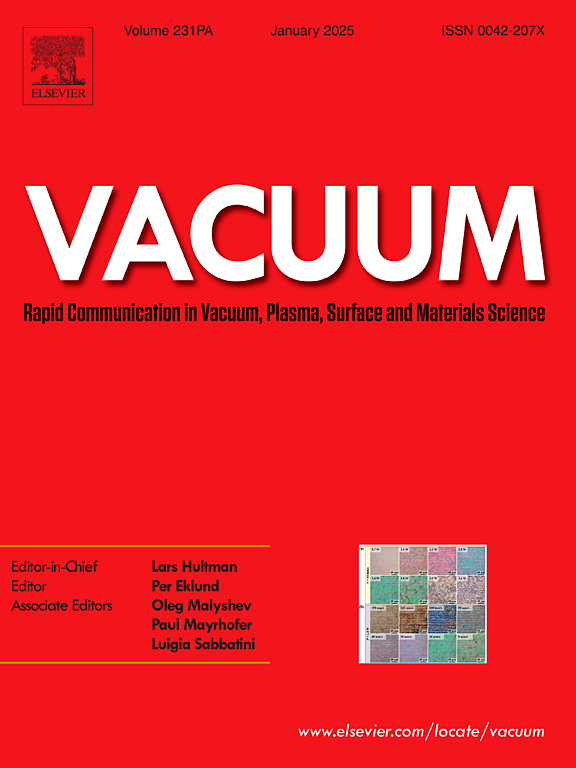Fluid flow characteristics in RH vacuum refining with argon injection through down-leg snorkel
IF 3.8
2区 材料科学
Q2 MATERIALS SCIENCE, MULTIDISCIPLINARY
引用次数: 0
Abstract
The flow fluid characteristics in RH vacuum refining with argon injection through down-leg snorkel (AITDS) were investigated by conducting a physical modeling, treating an industrial RH facility as the prototype. The velocity distribution of flow field, mixing time, and circulation flow rate in the physical model were characterized using the particle image velocimetry (PIV), conductivity measurement, and ink tracing, respectively. The PIV results showed that the application of AITDS in RH refining led to the lifting of vortices between the down-leg snorkel and ladle wall, which was conducive to the stirring of liquid in this region. The liquid flow velocity inside the down-leg snorkel tended to reduce with the increasing flow rate of AITDS, resulting in the increase of mixing time at the ladle bottom region. It was suggested that the flow rate of AITDS should be set to 0.5 %–2 % of the lifting gas flow rate to balance both the efficiencies of bubble adhesion for inclusion removal and the circulation refining. Furthermore, the decarburization and degassing of RH refining with AITDS was discussed, and the reduction in circulation flow rate by AITDS had no noticeable negative impact on the control of final carbon, hydrogen, and nitrogen contents.
下支管喷氩RH真空精炼流体流动特性
以某工业RH装置为原型,通过物理建模研究了下腿式通气管注氩RH真空精炼过程中的流体流动特性。利用粒子图像测速(PIV)、电导率测量和油墨示踪分别表征了物理模型中流场的速度分布、混合时间和循环流速。PIV结果表明,在RH精炼过程中,AITDS的应用使得下支通气管与钢包壁之间的涡流上升,有利于该区域内液体的搅拌。随着AITDS流量的增加,下支通气管内液体流速有减小的趋势,导致钢包底部混合时间增加。建议AITDS的流量为提升气流量的0.5% ~ 2%,以平衡气泡附着去除夹杂物的效率和循环精炼的效率。此外,还讨论了AITDS在RH精炼过程中的脱碳脱气作用,AITDS降低循环流量对最终碳、氢、氮含量的控制没有明显的负面影响。
本文章由计算机程序翻译,如有差异,请以英文原文为准。
求助全文
约1分钟内获得全文
求助全文
来源期刊

Vacuum
工程技术-材料科学:综合
CiteScore
6.80
自引率
17.50%
发文量
0
审稿时长
34 days
期刊介绍:
Vacuum is an international rapid publications journal with a focus on short communication. All papers are peer-reviewed, with the review process for short communication geared towards very fast turnaround times. The journal also published full research papers, thematic issues and selected papers from leading conferences.
A report in Vacuum should represent a major advance in an area that involves a controlled environment at pressures of one atmosphere or below.
The scope of the journal includes:
1. Vacuum; original developments in vacuum pumping and instrumentation, vacuum measurement, vacuum gas dynamics, gas-surface interactions, surface treatment for UHV applications and low outgassing, vacuum melting, sintering, and vacuum metrology. Technology and solutions for large-scale facilities (e.g., particle accelerators and fusion devices). New instrumentation ( e.g., detectors and electron microscopes).
2. Plasma science; advances in PVD, CVD, plasma-assisted CVD, ion sources, deposition processes and analysis.
3. Surface science; surface engineering, surface chemistry, surface analysis, crystal growth, ion-surface interactions and etching, nanometer-scale processing, surface modification.
4. Materials science; novel functional or structural materials. Metals, ceramics, and polymers. Experiments, simulations, and modelling for understanding structure-property relationships. Thin films and coatings. Nanostructures and ion implantation.
 求助内容:
求助内容: 应助结果提醒方式:
应助结果提醒方式:


